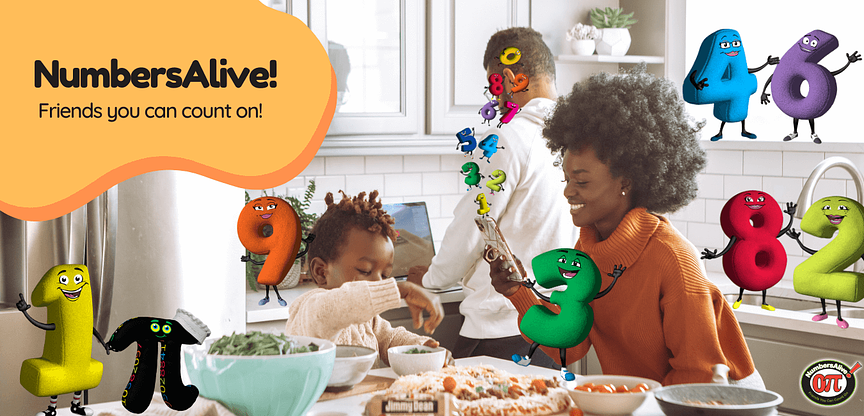NumbersAlive! has focused on creating activities to alleviate math anxiety, increase mathematical thinking and encourage students to become mathematical makers for 9+ years. Covid-19 disrupted traditional in-school classes. Without plans to establish roles and training, teachers/schools needed to rely on families as full partners in the teaching and learning of their children.
Encouraging discovery and discussion of real questions posed by students enhances mathematical thinking and develops a positive mathematical mindset in a way that “getting the right answer” rarely does.
Number Walks, Geometry Talks and Numeracy Activities are short family-friendly activities based on photos/current events that we post daily on social media.
Edible Math consists of fun, creative and tasty activities that share ways parents or teachers can use food items to develop mathematical thinking. Sorting jelly beans, discussing shapes of fruits and vegetables, or comparing chocolate bars are just some of the activities we encourage to enrich the learning experience. And being food, learners can eat the spoils!
Building NumberOpolis! is a family/school/community project that incorporates design-thinking to construct an entire town with numbers 0-9, and/or higher-level math and science constants.
Demand for our adaptable open source activities has increased rapidly.
We began “Numbers in the Park” in response to Covid-19. We collaborated with Allister Chang, a member of the DC School Board to use parks and public areas to work with families.
Since then, we partnered with DC Council Member Brooke Pinto, as well as DC Ward 8 Commissioner Shaquan Hudson and Brenda Richardson to bring our program to families and learners in lower-income communities. Recently, our activity “Turning Two Circles Into a Selfie Square” became a global finalist in the Rosenthal Prize in innovation and inspiration in math education.
We plan to continue expanding our programs. Our presence in the communities has led to increased interest and partnering with organizations in and outside the Washington, DC area in most educational disciplines and for students of all ages.
Anyone can adopt our ideas of looking around the house or on walks to find numbers and shapes in nature, architecture, types of measuring tools, etc. What it requires is changing the focus from looking down at worksheets to looking outward to discovering and describing math in the world. Rather than saying “math is everywhere” families can turn to daily scavenger hunts and find math everywhere.



